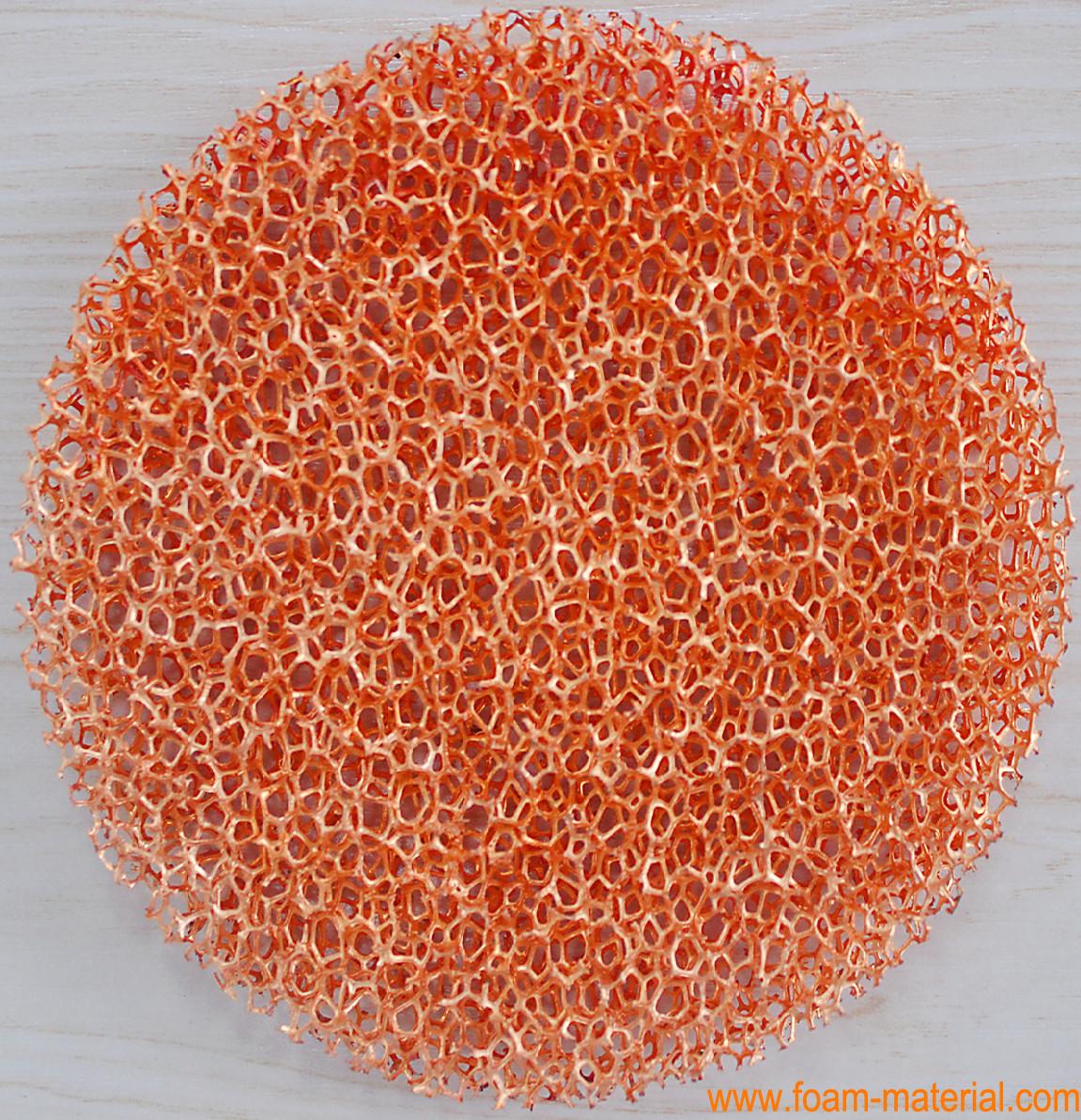Porous Copper Foam: Applications, Properties, and Manufacturing Techniques
● Introduction
Porous copper foam, a type of metallic foam, is characterized by its high porosity and unique physical and chemical properties. This material has garnered significant interest in various fields such as energy storage, catalysis, thermal management, and biomedical engineering due to its exceptional conductivity, lightweight structure, and large surface area.
● Properties of Copper Foam
1. **High Surface Area**: The porous nature of copper foam results in a significantly higher surface area compared to solid copper. This is advantageous for applications requiring high catalytic activity or enhanced surface reactions.
2. **Excellent Conductivity**: Copper foam retains the excellent electrical and thermal conductivity of bulk copper, making it ideal for applications in thermal management and energy storage.
3. **Lightweight**: The porous structure reduces the overall density of the material, providing a lightweight alternative to solid metals while maintaining mechanical strength.
4. **Mechanical Strength and Durability**: Despite its porous nature, copper foam exhibits good mechanical strength and can withstand various stresses and strains, making it suitable for structural applications.
5. **Chemical Stability**: Copper foam is resistant to oxidation and corrosion in many environments, enhancing its durability and lifespan in various applications.
● Manufacturing Techniques
1. **Template-Based Methods**: This technique involves coating a polymer or ceramic template with copper and subsequently removing the template to leave behind a porous structure. Methods include:
- **Electrodeposition**: Copper is electroplated onto a pre-shaped template, which is then removed, typically by heat or chemical means.
- **Chemical Vapor Deposition (CVD)**: A copper precursor is decomposed on the template surface to form a copper coating.
2. **Foaming Methods**: These involve creating a foam from a copper melt or solution and solidifying it to retain the porous structure. Methods include:
- **Gas Injection**: Inert gas is injected into molten copper to create bubbles, which solidify into a foam.
- **Powder Metallurgy**: Copper powder is mixed with a foaming agent and heated to produce a porous structure as the agent decomposes and releases gas.
3. **Additive Manufacturing**: Advanced 3D printing techniques can be used to create complex porous copper structures with high precision, allowing for customized foam geometries tailored to specific applications.
● Applications
1. **Energy Storage**: Porous copper mesh foam is used in batteries and supercapacitors as a conductive framework for electrodes. Its high surface area improves the efficiency and capacity of these energy storage devices.
2. **Catalysis**: The large surface area and good conductivity of copper foam make it an excellent catalyst or catalyst support in various chemical reactions, including hydrogen production and environmental remediation.
3. **Thermal Management**: Copper foam's excellent thermal conductivity and lightweight nature make it suitable for heat exchangers, heat sinks, and other thermal management systems in electronics and aerospace industries.
4. **Biomedical Engineering**: Porous copper foam is used in biomedical implants and scaffolds due to its biocompatibility and ability to promote cell growth. Its structure can be tailored to mimic the porosity of natural bone, enhancing tissue integration.
5. **Filtration**: Copper foam's porous structure makes it an effective material for filtration systems, capable of trapping particles and contaminants while allowing fluids to pass through.
● Future Directions and Challenges
1. **Scalability**: Developing cost-effective and scalable manufacturing processes for high-quality copper foam is essential for widespread adoption.
2. **Customization**: Advancing techniques for tailoring the pore size, distribution, and overall geometry of copper foam to meet specific application requirements will enhance its utility.
3. **Integration with Other Materials**: Combining copper foam with other materials, such as polymers or ceramics, can create composite structures with synergistic properties for advanced applications.
4. **Environmental Impact**: Researching environmentally friendly production methods and recycling processes for copper foam will address sustainability concerns associated with its use.
● Conclusion
Porous copper foam represents a versatile and promising material with numerous applications across various industries. Its unique combination of high surface area, excellent conductivity, and lightweight structure makes it an attractive choice for energy storage, catalysis, thermal management, biomedical engineering, and filtration. Ongoing research and development efforts aim to overcome current challenges and unlock the full potential of this remarkable material.
